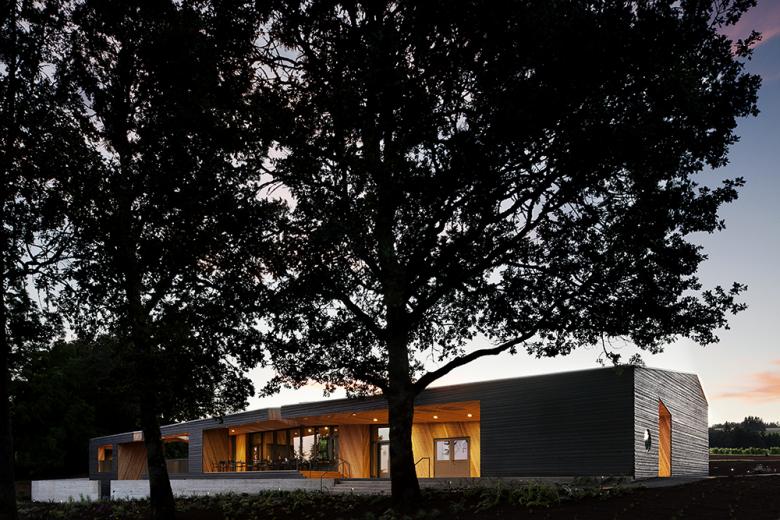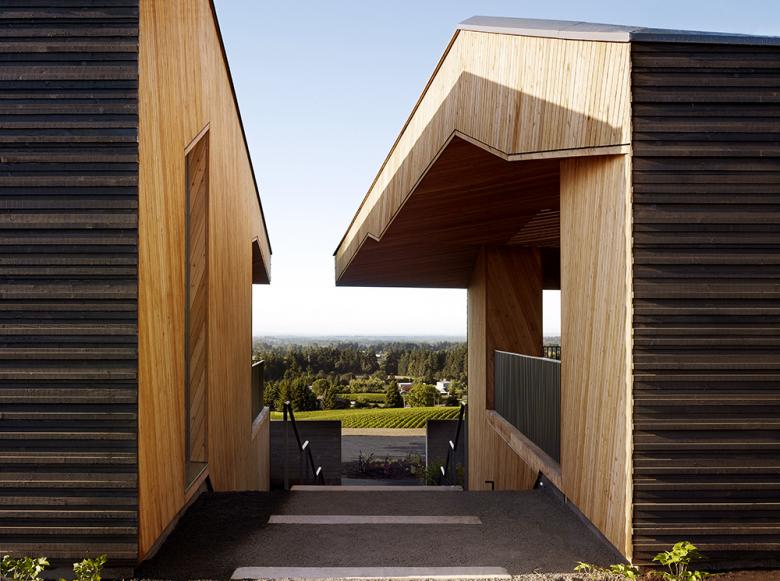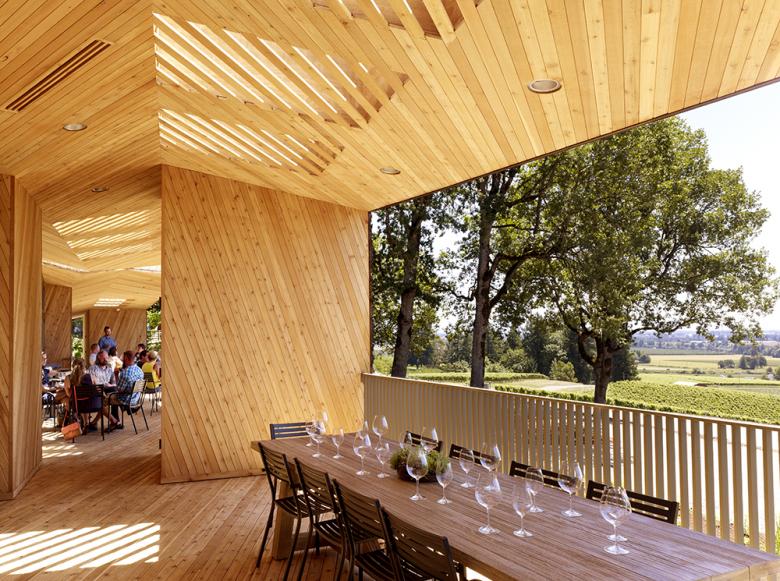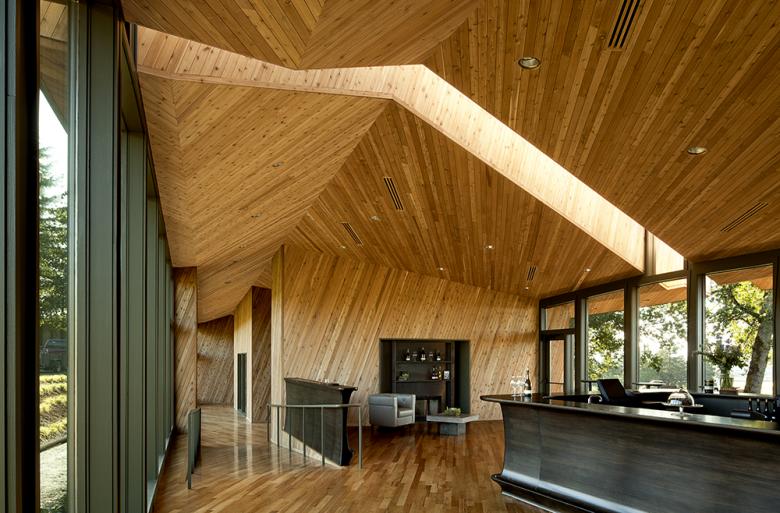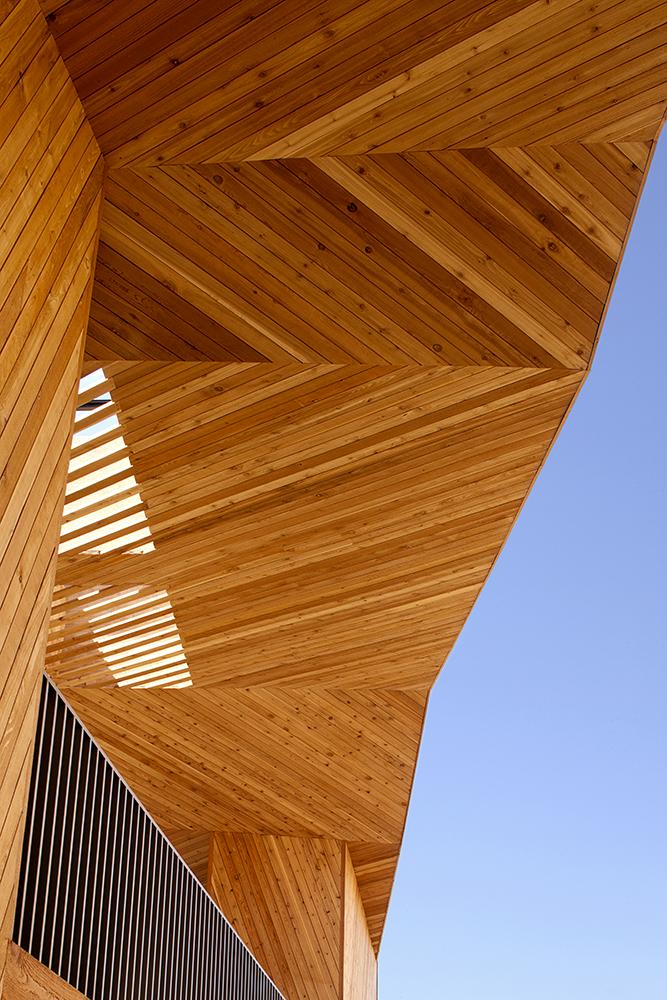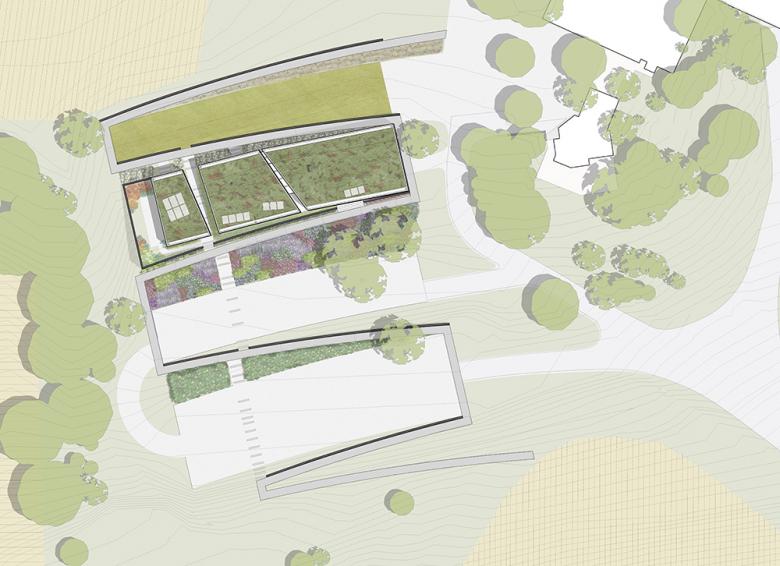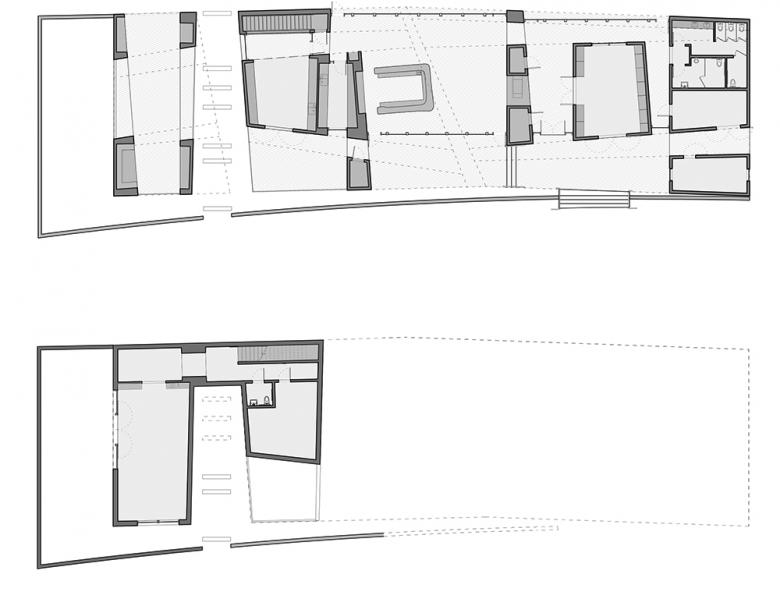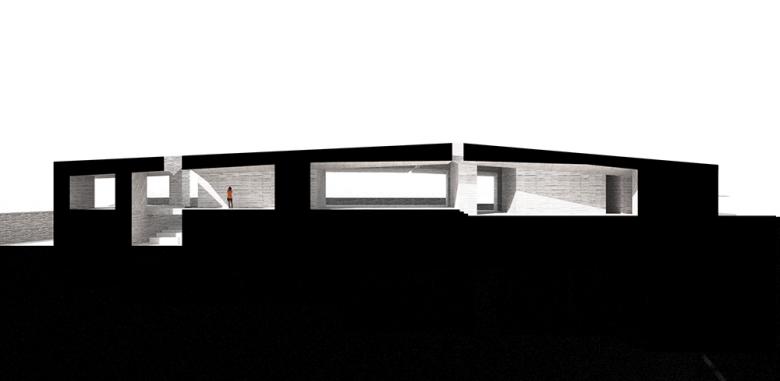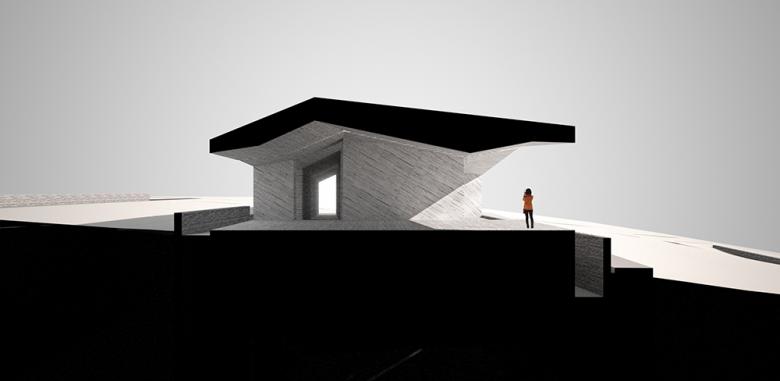Sokol Blosser Winery Tasting Room
Sokol Blosser Winery Tasting Room
16. September 2013
At least since Herzog & de Meuron's Dominus Winery in Napa Valley, California, wineries have been great clients for architects, resulting in many notable buildings that are strongly connected to the surrounding cultivated landscapes. Brad Cloepfil, who has wanted to design a winery since starting Allied Works Architecture, attributes the appeal to the wine industry's "close connections between architecture, labor and landscape." Of course it helps that he lives and works in Oregon, a state with many quality wineries. In his first project for a winery, a tasting room for Sokol Blosser Winery in Dayton, he also aims to make a strong connection to the landscape, giving the small building a large presence. The architect answered a few questions about the project that opened a couple of months ago.
Building at dusk
What were the circumstances of receiving the commission for this project?
Many years ago, we designed the Blue Hour restaurant in downtown Portland. Michael Brown, Sokol Blosser’s current Director of Consumer Sales & Marketing, was the restaurant manager for a time. When he began to work at Sokol Blosser, he recommended us to the family for the tasting room project. I have wanted to design a winery since Allied Works began.
South-facing terrace
Can you describe your design process for the building?
We began the design process by walking the land, both alone and with our clients, to read the site and to find a unifying concept for the master plan. The design begins by marking the land, cutting a series of gardens, terraces and paths into the face of the hill. On an upper terrace, the building lifts from the earth. The building is conceived as a mass of wood that has been sculpted and carved to form the spaces for occupation, rooms of distinct size and scale that connect to the landscape above and below. The design and material expression is linked to the tradition of wood structures on the surrounding farms and is specifically tailored to the site and purpose of the winery.
View of landscape through gap and stairs
How does the building compare to other projects in your office, be it the same or other building types?
Allied Works had looked for an opportunity to do a winery project for a very long time, given our interests and the industry’s close connections between architecture, labor and landscape. In all of our work, we operate by the belief that each project is a new conceptual and creative beginning, with the nature of the site, landscape, program, views, climate and available light acting as forces that give form to the ideas. In this regard, the Sokol Blosser Tasting Room is "of a piece" philosophically with the rest of our portfolio even while it is the first of this type that we’ve designed. We hope that it will lead to more wineries and agricultural buildings in the years to come.
View from terrace
How does the building relate to contemporary architectural trends, be it sustainability, technology, etc.?
The building is a crafted object, not about processes or systems but about making. The new building incorporates a variety of sustainable design features, including a green roof that aids in building thermal performance, reduces runoff and visually ties the building back to the landscape. Ample daylighting throughout the building reduces electrical loads and the need for unnecessary fixtures while creating warm and inviting interiors. In addition, we employed a number of passive and low-energy systems to aid in the performance of the building: a partially earth-sheltered structure and high-efficiency glazing reduce heating and cooling loads. Deep-profile, screened skylight assemblies and cantilevered overhangs on the south face reduce glare and direct solar heat gain in summer months. The tasting room and surrounding grounds are "net-zero energy" with an on-site solar array intended to provide 100% of the power for the new building.
Interior tasting room
Are there any new/upcoming projects in your office that this building’s design and construction has influenced?
This building is part of a conversation of form, space and structure that began with our Dutchess County Guest House and continues to the National Music Centre of Canada.
Wood ceiling detail
How would you describe the architecture of Oregon and how does the building relate to it?
Oregon has always had a very distinct architectural tradition, given its relative isolation, its climate and beautiful natural setting. At the same time, it is a tradition that has appropriated and synthesized a wide array of source material, from native dwellings, early pioneer structures and agricultural buildings, victorian and early cast-iron architecture to mid-century modern design and later influences. For the Tasting Room, we wanted the architecture to be excruciatingly specific – a response to the agricultural and working landscapes of Oregon’s wine country rather than the region as a whole.
I have known and loved the landscape of Yamhill County, where the winery is located, my entire life. My parents were raised in nearby Newberg, Oregon, and my family has farmed in the area for over 50 years. I’ve always wanted to make beautiful architecture inspired by the rolling vineyards, oaks and savannah of the Dundee Hills. While the Tasting Room is linked to the tradition of wood structures of the surrounding farms and bound to its specific site and purpose, we wanted to take things a step further. While displaying a lot of ingenuity, Oregon has seldom been an originator in the realm of architecture. We see this project as something of a departure, a new way of seeing, occupying and structuring a relationship to the land.
Email interview conducted by John Hill.
Site Plan
Floor Plans
Building Section
Building Section
Sokol Blosser Winery Tasting Room
2013
Dayton, Oregon
Client
Sokol Blosser Winery
Architect
Allied Works Architecture
Portland, OR
Design Principal
Brad Cloepfil
Project Architect
Nathan Hamilton
Project Manager
John Weil, Kathryn van Voorhees
Project Team
Christopher Brown, Jared Abraham, Sushwala Hedding, Neal Harrod, Bjorn Nelson, Henry Adam Weber
Structural Engineer
KPFF Engineers
MEP/FP Engineer
Glumac
Landscape Architect
Allied Works Architecture
Interior Designer
Jennifer Fowler Interiors
Contractor
R&H Construction
Plants/Horticulture
Tom Fischer
Sustainability
Green Building Services
Civil Engineer
Leonard A. Rydell
Custom Furniture
Scott Roeder Woodworkers
Site Area
1.5 acres
Building Area
5,700 sf
Photographs
Jeremy Bittermann
Drawings
Allied Works Architecture
